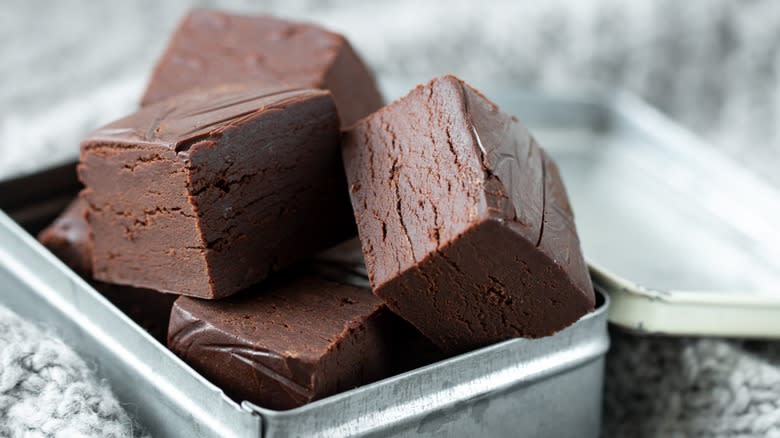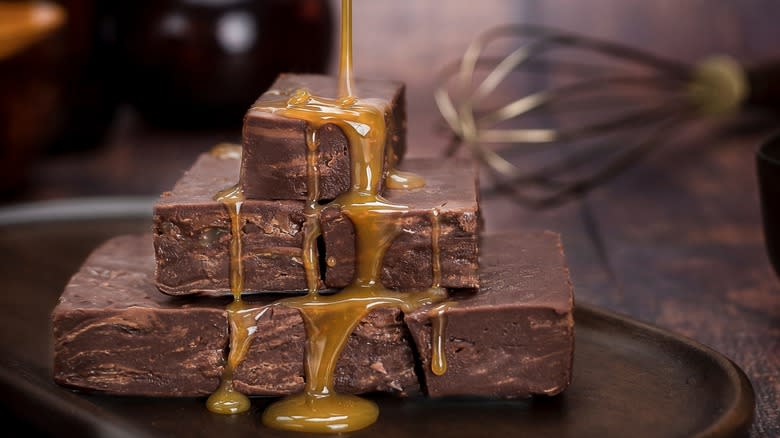The Biggest Mistake You're Making With Homemade Fudge

For an emulsion typically made with only a few simple ingredients, homemade fudge can be undeniably finicky to get right. While it seems like melting sugar, chocolate, and condensed milk together would practically make itself, there's actually a lot of science at play when it comes to getting your fudge mixture just right — and many people tend to give up before that can happen. The biggest mistake most make when creating fudge is simply not stirring it enough, and it's easy to see why when glancing over a typical fudge recipe.
Most of the time, a recipe will have you combine everything on the stove, stirring until it looks smooth and creamy. Next, you go right into pouring the fudge into a pan — something we actually want to avoid. When the mixture reaches about 236 to 238 degrees Fahrenheit, your fudge should not be touched until it cools down to 110 degrees Fahrenheit. If it is stirred or disturbed during this time, it can result in large sugar crystals forming, which is how the dreaded "grainy" fudge happens.
Once the fudge cools, now comes the important stirring. After adding in other common ingredients like marshmallow creme and chocolate chips, this is when you'll vigorously stir the mixture until it turns into a dull, non-glossy concoction. It may look oily, clumpy, or like you did something wrong, but this just means you must continue to stir and stir until everything is combined. Finally, it can be transferred to the pan.
Read more: Chocolate Brands, Ranked Worst To Best
Other Mistakes To Avoid When Making Fudge

Although a lack of stirring — as well as not stirring at the right time — is the biggest mistake you're making with homemade fudge, this isn't the only step that's crucial in the science of making the absolute best fudge. Another extremely important aspect, which also aids in knowing exactly when to stir, is having a candy thermometer on hand. Since cooking times will vary with the size of your saucepan and the intensity of your heat source, simply eyeballing when to stir is a big no-no.
In order to ensure creamy fudge that's been properly evaporated, a thermometer is a must. Moreover, you'll want to skip scraping the sides of the saucepan as you're pouring the mixture into your cooling pan. Since sugar is prone to crystallizing on the sides of the saucepan, this can form a grainy layer, and once that is mixed into the fudge, all of that smooth creaminess you've worked so hard to create goes right out the window.
Read the original article on Tasting Table.

